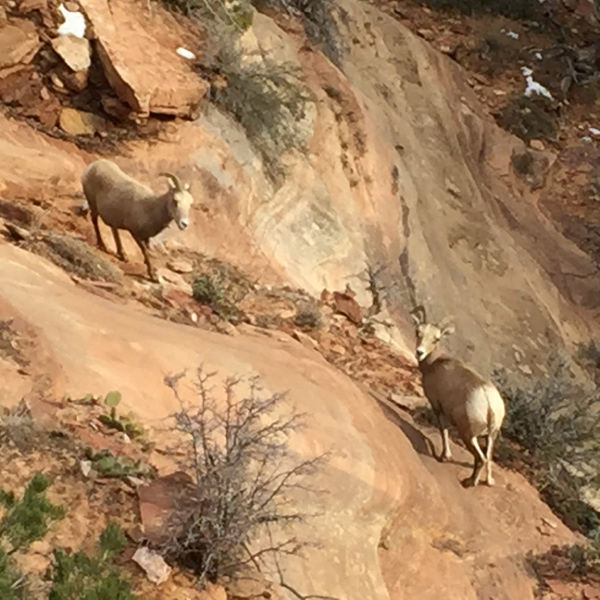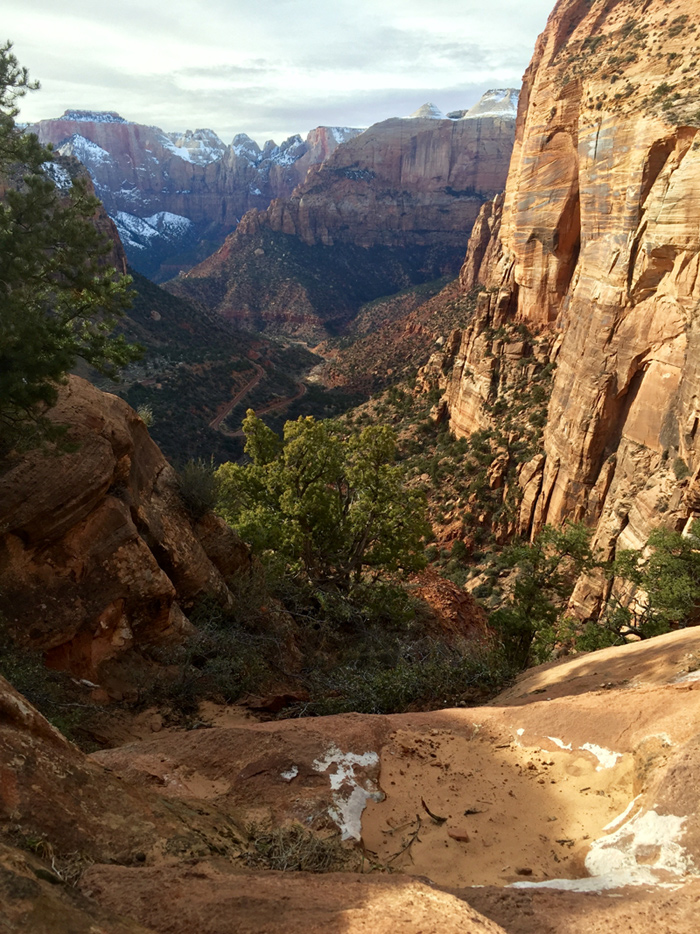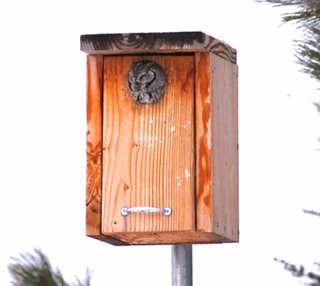Utah County Birders Newsletter
|
 |
Contents
February Meeting
Upcoming Field Trips
Captainís Log
Bird of the Month
Field Trip
Report - South Utah County
Backyard Bird of the Month
2016
Birding Challenge
January Hotline Highlights
FEBRUARY MEETING:
Thursday, February 11th, 2016 - 7:00 pm.
Eric Peterson will give a presentation
titled "Hummingbird Mania" featuring many of
his stunning photos and birding stories about the hummingbirds he's seen during
his travels.
Meet at 7:00 pm at the Monte L. Bean Museum. 645 East 1430 North, Provo, UT http://mlbean.byu.edu/
Saturday February 13, 2016: 7:30am-early afternoon. Antelope Island and yonder. Meet at the Park and Ride on the northwest corner of the American Fork Main Street exit off I-15 to carpool. Bring a State Park pass if you've got one. This trip will be weather dependent (if it's cold and snowy we might end up somewhere a little closer).
We are actively recruiting people to lead local half-day field
trips, any time, any place. If you would like to lead a field trip or if you
have any ideas for this yearís field trips, please contact Bryan Shirley at -
bt_shirley@hotmail.com
Utah County Birders Captainís Log:
February 2016
by Keeli Marvel
 |
|
Bighorn Sheep in Zion National Park |
 |
|
The Canyon Overlook trail in Zion National Park |
New Year, New Challenge! As most of you probably know by now, weíve got a new
challenge this year and Iím pretty stoked about it! I also have a new birding
side kick, which Iím also super excited about. My sister Mellory has gotten
hooked and sheís as excited to start seeing birds for our new challenge as I am.
This last weekend was the St. George Bird Festival. Mellory and I cruised down
on Thursday night ready to get out there on Friday and start checking out the
birds. Friday morning we headed over to Zion NP and started at the visitor
center/Watchmen Campground. At first we thought it was going to be bust. There
was all kinds of construction going on in the upper campground with music
playing and construction workers all over the place, and not a bird in sight. We
were just about to give up and head back to the car, but we could hear house
finches down in the lower part of the campground close to the river, so we
followed the sound and were soon rewarded. A flock of Dark-eyed Juncos, House
Finches, Black-capped Chickadees, and Yellow-rumped Warblers moved through.
Following the sounds of Spotted Towhees, we hit the jackpot with a Hermit
Thrush, House Wren, a Song Sparrow, and a pair of immature Golden-crowned
Sparrows all within a couple of feet of each other. The Golden-crowned Sparrows
were especially cooperative, hanging out in a bush in the sun for quite a few
minutes while we studied them.
From there we ventured further into the park. A quick stop at the Court of the
Patriarchs produced a Common Merganser in the river. Another stop at the Zion
Canyon Lodge produced a Ruby-crowned Kinglet along the river. Overall though,
the birds were pretty quiet. We drove all the way up to the Big Bend turn around
hoping for a glimpse of the condors that have taken up residence there, but no
luck.
After a quick lunch in town, we headed over to the Springdale pond.
Unfortunately the area was a total mess and almost a complete waste of time. It
seems that improvements are planned for this area and all the trees around the
pond and along the river have been cut down and reduced to piles of wood
shavings. There were two female Hooded Mergansers and a Male Bufflehead on the
pond, but no other birds in the area.
After the disappointment of the pond, we headed back into the park for a quick
hike on the Canyon Overlook Trail. We didnít see a single bird along the trail
but we did get to watch a pair of Bighorn Sheep nibbling brush along the
hillside below the trail.
Friday didnít produce many birds, but at least the views were nice.
Saturday morning we hitched a ride to Lytle for the festival field trip. A
Ladder-backed Woodpecker greeted us in the parking area at the ranch. Mellory
and I wandered off for a while on our own through the brush by the entrance road
and picked up a flock of Gambelís Quail, an Annaís Hummingbird, Phainopeplas,
Western Bluebirds, a Ruby-crowned Kinglet, and were gone just long enough to
miss a group sighting of the Purple Finch in the orchard. A wander along the
hillside road produced more Phainopeplas, a Black-tailed gnatcatcher, and
another finch in the cottonwoods, which after more examination, proved to be a
female Cassinís Finch. We also picked up American Pipits, a Cooperís Hawk, and a
single Orange-crowned Warbler back near the parking area. It was altogether a
slowish day for the ranch, but at least we saw some of the normal Lytle species!
On the way back we stopped at Utah Hill to try for and dipped on the
Black-chinned Sparrows (poooossssibly the wrong time of year?!?) We also checked
the Ivins fields where a Lark Bunting had been previously reported, and ran into
a pair of Sommerfelds and Pam and Jeff Hardy doing the same. There was no Lark
Bunting to be seen, but we did see some nice Savannah Sparrows and Sayís Phoebes
and a Loggerhead Shrike slumming it with the White-crowned Sparrows and House
Sparrows.
After a quick wander around Tonaquint Park to pick up the Abertís Towhees,
Mellory and headed out to find the Vermillion Flycatcher at Boots Cox Park. We
cruised over to the park, walked up to the fence, and the male Vermillion
Flycatcher was perched on the tree in the middle of the field. He was
practically fluorescent in the afternoon sunshine. I wish all birding was that
easy. We dipped on the Black Phoebe at the Hurricane water treatment plant
(maybe too late in the day?), but had a nice encounter with a low cruising
Northern Harrier, and picked up Great-tailed Grackles and a rogue Snow Goose.
Over at Sand Hollow Reservoir in the fading light we picked up Red-breasted
Mergansers, Hooded Merganser, Common Merganser, Common Goldeneye, Bufflehead,
Western Grebes, Ruddy Ducks and a Loggerhead Shrike. The storm started blowing
in after that, so we called it a night. I had tentative plans to pick up a few
species on the way out of town the next morning, but the weather report was so
grim we decided to just hit the road and hope for the best. That seemed to be
the best decision we made the entire weekend as we scooted home before the next
round of storms and the ensuing wrecks that tangled everyone up later in the
day.
I came home wishing weíd had more time (thereís never enough time to soak in the
sunshine and the birds down there), but Iím sure weíll find a reason to head
down there again in the not-too-distant future.
Luck to all of you as you embark on your own adventures for this yearís birding
challenge! Hope to see you all out there birding, and Happy Valentineís Day next
weekend!
Happy Birding!
Keeli Marvel
American Kestrel
Falco Sparverius
by Jeff Cooper
[Rerun article from February 2013]
A few years ago when I first started
rekindling my childhood interest in birds I was browsing through a field guide
to the birds of North America and came across a bird called American Kestrel. I
had never heard the word "kestrel" before and I had no idea where such a bird
would exist (other than the obvious reference to ďAmericaĒ). I remember reading
that it was the "most colorful falcon" in North America. The picture I was
viewing was certainly colorful, especially the male. I remember thinking I would
love to see one of those guys. Little did I know I simply needed to become aware
that the bird existed and then point my eyes in the right direction when I took
my usual walk along the canal near my home. I saw my first-ever Kestrel sitting
on a power line and was awestruck by its colors. I'm sure I've seen a thousand
since that first time, but I still take time to admire them.
American Kestrels are the smallest falcons in North America. They appear across
the United States, but they are much more common in the western states. They
prefer open habitats such as grasslands, meadows, and farm fields. They are
often seen perched on power poles and power lines and frequently pump or bob
their tails while perched, especially after just after landing. Kestrels nest in
cavities and will nest in bird houses. They occupy very small territories and
are often seen hover-hunting above those territories. Kestrels are opportunistic
when it comes to eating. They are excellent mousers and will eat insects, small
reptiles, and other birds. The image below is of a male as it was hover-hunting
over a small field.
|
|
Female Kestrels show brown streaking on their chests. Males have cleaner chests with a soft salmon color above and a few spots on their sides. The females have rufous (rusty) and black barring on their wings and back. Males have distinctive blue upper wings with black markings. Both males and females have distinctive face patterns that include two black stripes. Both sexes also show "false eyes" on the backs of their heads. This is believed to help deter possible predators that may be approaching from behind. Here are some images showing the differences between the two sexes.
|
|
|
The photos below show some of the differences between the two sexes when seen from below. The male's tail feathers show a broad dark terminal band. The female shows banding throughout the tail feathers. Again, the male has a cleaner chest with a soft salmon color at the top and a few spots along the sides where the female shows streaking throughout the chest.
|
|
|
This article was condensed from a
post I originally published on my blog:
http://neovistabirding.blogspot.com/2013/01/american-kestrel-small-but-colorful.html
If you would like to write an article for the Bird of the Month, please contact Machelle - machelle13johnson@yahoo.com
Click here for past 'Birds of the Month'.
Field Trip Report
South Utah County -
January 9th, 2016
by Keeli Marvel
The Utah County
Birders field trip around the south end of the county yesterday had a really
good turnout. We started the trip in East Bay where we relocated the Eurasian
Wigeon as well as a probably hybrid Eurasian x American Wigeon. Thanks to Suzi
for spotting both birds! The Eurasian Wigeon only gave us brief looks as it was
in a flock of American Wigeons further west on the golf course and dropped down
into a pond out of sight soon after it was spotted.
From there, we went south to the Lewis's Woodpecker spot in Spanish Fork/Salem.
The Lewis's were a no show. If anyone has some free time, we should scout around
the area for them - it seems they've picked somewhere else to be as they haven't
been seen in their usual spot for awhile.
We checked the Salem cemetery for the Crossbills, but it appears they have also
moved on. At Salem Pond there was quite a nice variety of ducks, including two
female Barrow's Goldeneye, three female Buffleheads, and both male and female
Wood Ducks that were right up close to the shore.
To finish off the trip we relocated the Red-shouldered hawk that is still
hanging out in the previously reported location in Spanish Fork.
Thanks to everyone who joined us! Links to the complete ebird reports are below.
Happy Birding!
Keeli Marvel
East Bay Golf Course:
http://ebird.org/ebird/view/checklist?subID=S26790649
Kuhni Wetland Trail:
http://ebird.org/ebird/view/checklist?subID=S26791467
Lewis's Woodpecker Spot:
http://ebird.org/ebird/view/checklist?subID=S26792547
Salem Cemetery:
http://ebird.org/ebird/view/checklist?subID=S26793372
Salem Pond:
http://ebird.org/ebird/view/checklist?subID=S26797345
Spanish Fork Fields:
http://ebird.org/ebird/view/checklist?subID=S26797347
January 2016
 |
|
Western Screech-Owl in
Martha's yard. |
Jack Binch - Sandy
I still have the Yellow-rumps and Merlin, but I think my favorite for January was the Cedar Waxwings. Last I will see of them until the flowering pears get more fruit.
Harold Clayson -
Salem
Sunday as I am shoveling snow to get to church, a Northern Harrier comes
out of the fields and buzzes my front yard feeders. Had a Sharp-shinned Hawk
do the same and followed a Goldfinch for a minute without success while I was
shoveling snow a week ago.
Jeff Cooper - Pleasant Grove
I spotted a
Black Merlin perched high in a tree when I pulled up to my home after work.
Lynn Garner -
Provo
A new backyard bird in January was a White-throated Sparrow among the
Juncos.
Martha Happ - Sandy
Look whoís moved in. A Western Screech-Owl. (see photo)
Suzi Holt -
Payson
Cedar Waxwing, I love hearing their song and then running out to see them
is even a bigger bonus!
Eric Huish - Pleasant Grove
Red-naped Sapsucker - It sat in the maple tree right outside my bedroom
window for over an hour. Unexpected this time of year.
Keeli Marvel - Saratoga Springs
I saw a pair of Great Horned Owls on my neighbor's roof and I've heard
them hooting around dusk several times in my neighborhood in Saratoga Springs.
Pretty awesome to have resident great horned owls.
Milt Moody - Provo
I've had a Yellow-rumped Warbler in my apple tree almost every day lately. It pecks on the shriveled apples and on the suit in the feeder hanging in the tree.
Leila Ogden - Orem
Still seeing the Red-breasted Nuthatch at my feeders.
Leena Rogers - Provo
Had an American Crow fly over your back yard. It's the first crow I've
seen this year and it was a new yard bird as well.
Dennis Shirley - Elk Ridge
Jan. 13, 2016 -- Just the same flock of 39 turkeys I've been feeding
since mid November. But they've now flown the coop - on to greener pastures, I
guess, where the snow is less than 2 feet! Anyone need three 50lb bags of
cracked corn?
Alton Thygerson - Provo
Downy Woodpecker - Occasional visitor to a suet feeder.
Report your favorite backyard bird
each month to Eric Huish at 801-360-8777 or
erichuish@gmail.com
The Utah County Birders have announced their much acclaimed biennial "Birder
Challenge" with Gold, Silver and Bronze levels of birding performance. Points
will be awarded depending on the rarity of the birds seen in Utah during the
year. Here are the
challenge rules.
Here is a spreadsheet and
a PDF printout
you can use if you'd like to participate.
The Utah County Birders Newsletter is now online only/mostly.
We've decided to stop the regular paper mail version of the UCB Newsletter. This will save our club on Printing, Postage and Paper. If you would like an email notice each month when the Newsletter is posted online please send an email to Eric Huish at erichuish@gmail.com.
We are willing to print the online version of the newsletter and mail it out to anyone who still wants a paper copy or who doesn't have internet access. If you know of anyone who enjoys the UCB Newsletter but doesn't have internet access please let Eric Huish or Keeli Marvel know and we will make sure they get a copy.
Printable Version of this UCB Newsletter